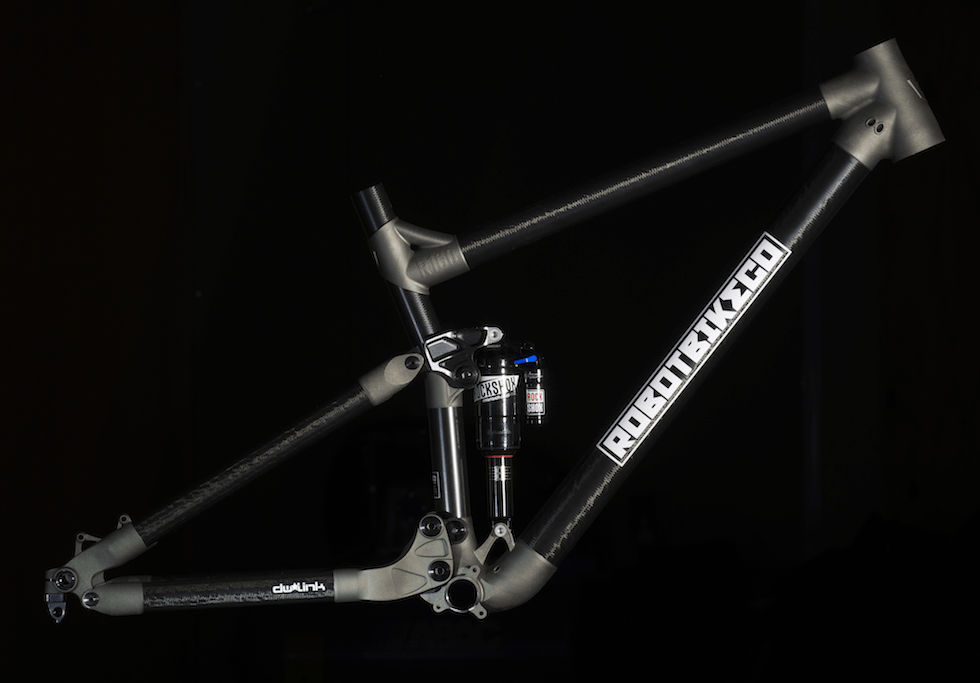Bespoke bike company puts additive in the frame
A Monmouth-based company hopes to break the mould with a bespoke mountain bike frame that has come to fruition with Altair, HiETA, and Renishaw.


For £4,395 the Robot Bike Co (RBC) will build customers a bespoke frame with carbon fibre components and tubing bonded into the double lap joints of additive manufactured lugs made from powdered titanium.
Despite the price tag, RBC maintains that the R160 fulfils criteria missing in today's mountain bikes, with AM parts allowing for customisation in a market more used to moulding carbon fibre frames in three sizes. RBC founding partner Ed Haythornthwaite added that technology developments would eventually bring bespoke bikes to a wider market.
To order a frame, customers use RBC's website to input their height, inside leg measurements and arm span, from which the size of the frame is then calculated. A CAD model of the entire bike frame is quickly generated to ensure the optimum fit, with 11 titanium lugs built around the customers’ exact requirements.

Register now to continue reading
Thanks for visiting The Engineer. You’ve now reached your monthly limit of news stories. Register for free to unlock unlimited access to all of our news coverage, as well as premium content including opinion, in-depth features and special reports.
Benefits of registering
-
In-depth insights and coverage of key emerging trends
-
Unrestricted access to special reports throughout the year
-
Daily technology news delivered straight to your inbox










Water Sector Talent Exodus Could Cripple The Sector
Maybe if things are essential for the running of a country and we want to pay a fair price we should be running these utilities on a not for profit...